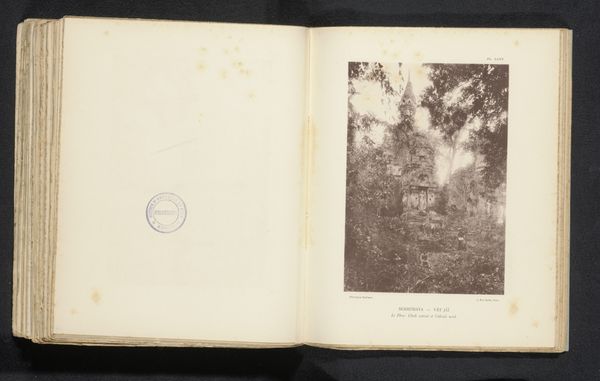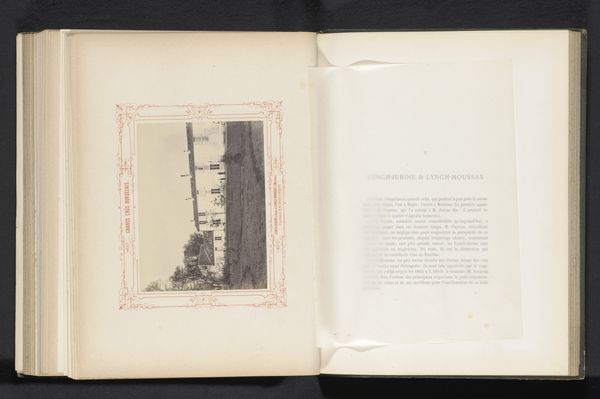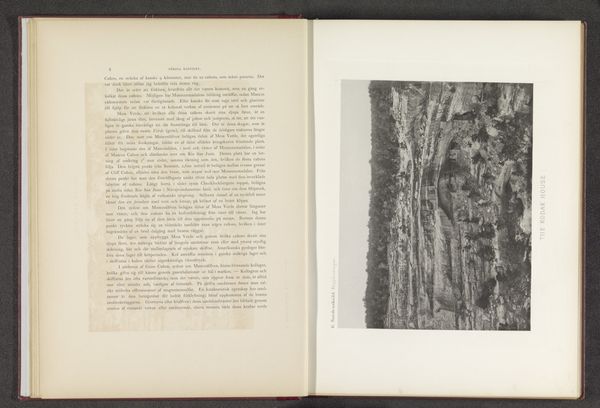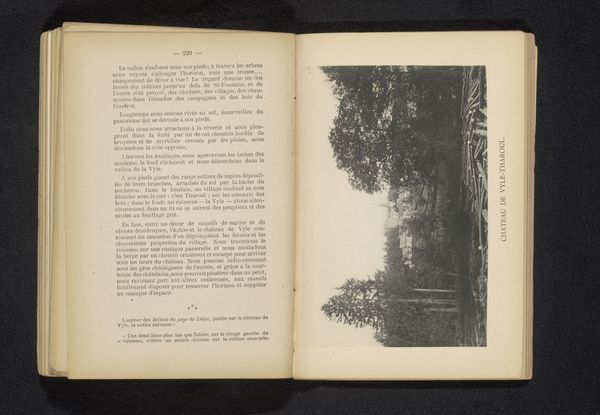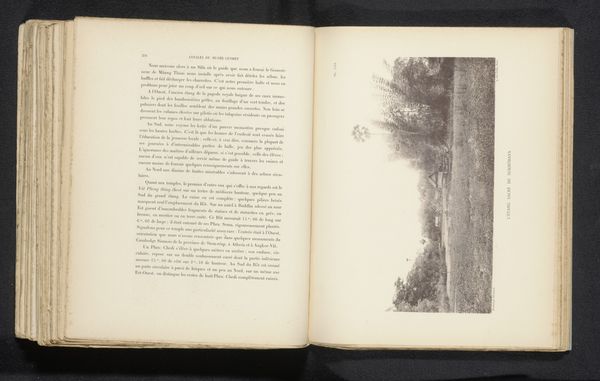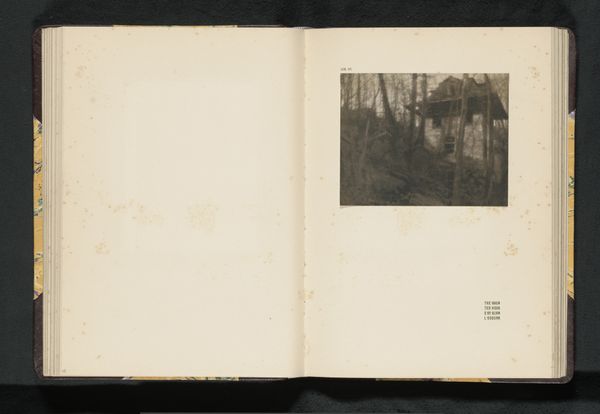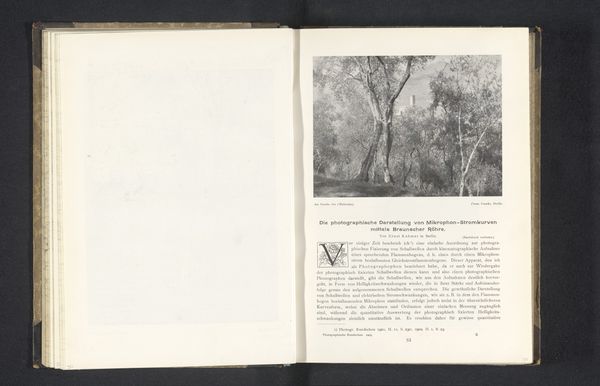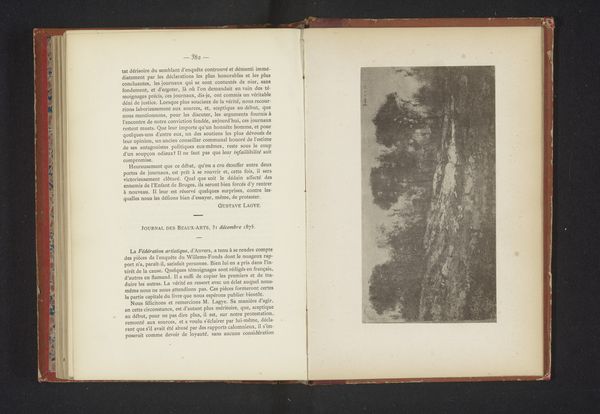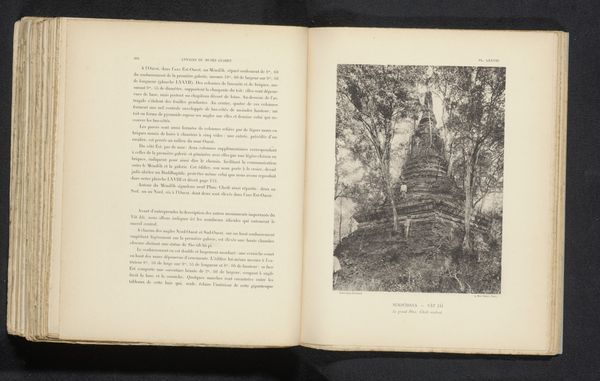
print, photography
# print
#
asian-art
#
landscape
#
photography
#
forest
#
ancient-mediterranean
Dimensions: height 212 mm, width 155 mm
Copyright: Rijks Museum: Open Domain
Curator: I'm struck by the way this image, “Gezicht op een tempel in een bos,” evokes a sense of hushed reverence, a quiet grandeur overtaken by nature. The dense forest seems almost to swallow the temple. Editor: This print, created before 1895, shows a view of a temple deep within a forest setting. It offers an intriguing lens through which we can examine colonialism’s gaze on Southeast Asia and its cultural heritage. Curator: Absolutely. The image becomes a record, a document shaped by a very specific power dynamic. How does it shape or participate in Western narratives about the “exotic” East and how were temples presented at this time? Editor: Indeed. We see here a very specific choice in framing. Notice the dense foliage, creating this sensation of discovery. The photograph then presents the temple as an object waiting to be found by an “adventurous” and European gaze. Furthermore, the temple is framed through a Westernized, photographic perspective, highlighting a specific, consumable angle of Southeast Asian architecture and art. Curator: The fact it's in print also means it’s intended for circulation and reproduction, shaping a wider public's perception of these spaces. Was this meant to serve some sort of documentary purpose, or perhaps something more propagandistic? Who controlled this circulation of the image and whose voices were present? Editor: It makes me consider the power of visual narratives. These images, however serene they appear, reinforce specific ideological standpoints that would allow colonial forces to appropriate both the cultural heritage and spaces that house it, to claim that preservation requires a Western hand. It leads to so many considerations on accessibility, viewership and ultimately whose histories are centered here. Curator: That intersection of visuality and ideology—the image, the observer, and the observed—highlights not just aesthetic beauty but power dynamics at play. It's more than just a photograph, but it becomes evidence. Editor: Precisely, turning the silent stones into powerful tools for narratives still influencing the dialogues on cultural exchange today.
Comments
No comments
Be the first to comment and join the conversation on the ultimate creative platform.
